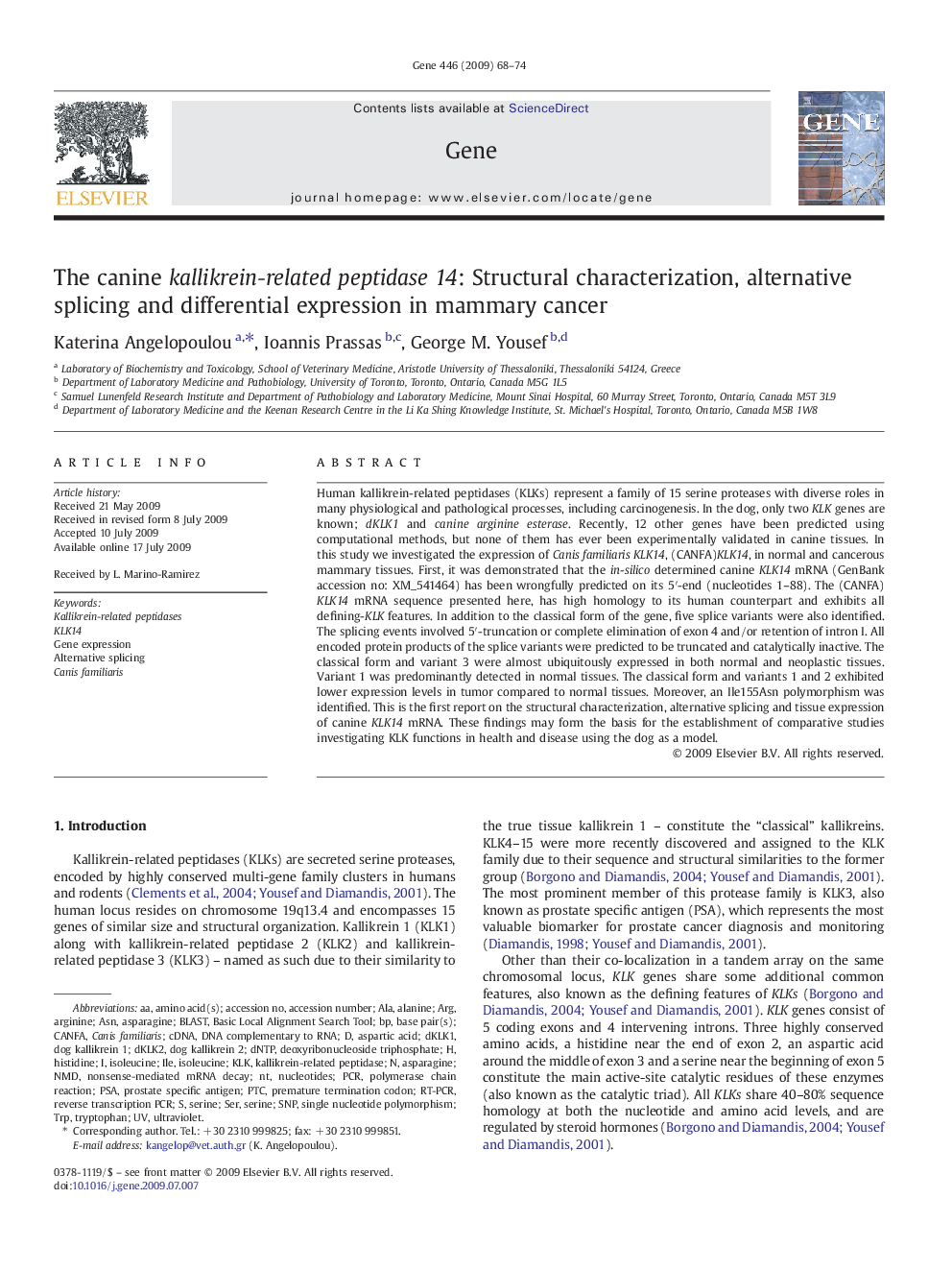| کد مقاله | کد نشریه | سال انتشار | مقاله انگلیسی | نسخه تمام متن |
|---|---|---|---|---|
| 2818729 | 1160087 | 2009 | 7 صفحه PDF | دانلود رایگان |

Human kallikrein-related peptidases (KLKs) represent a family of 15 serine proteases with diverse roles in many physiological and pathological processes, including carcinogenesis. In the dog, only two KLK genes are known; dKLK1 and canine arginine esterase. Recently, 12 other genes have been predicted using computational methods, but none of them has ever been experimentally validated in canine tissues. In this study we investigated the expression of Canis familiaris KLK14, (CANFA)KLK14, in normal and cancerous mammary tissues. First, it was demonstrated that the in-silico determined canine KLK14 mRNA (GenBank accession no: XM_541464) has been wrongfully predicted on its 5′-end (nucleotides 1–88). The (CANFA)KLK14 mRNA sequence presented here, has high homology to its human counterpart and exhibits all defining-KLK features. In addition to the classical form of the gene, five splice variants were also identified. The splicing events involved 5′-truncation or complete elimination of exon 4 and/or retention of intron I. All encoded protein products of the splice variants were predicted to be truncated and catalytically inactive. The classical form and variant 3 were almost ubiquitously expressed in both normal and neoplastic tissues. Variant 1 was predominantly detected in normal tissues. The classical form and variants 1 and 2 exhibited lower expression levels in tumor compared to normal tissues. Moreover, an Ile155Asn polymorphism was identified. This is the first report on the structural characterization, alternative splicing and tissue expression of canine KLK14 mRNA. These findings may form the basis for the establishment of comparative studies investigating KLK functions in health and disease using the dog as a model.
Journal: Gene - Volume 446, Issue 2, 15 October 2009, Pages 68–74